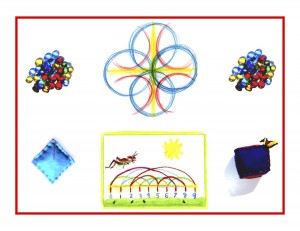Day 46
For one year, 365 days, this blog will address the Common Core Standards from the perspective of creating an alternate, ambient learning environment for math. Ambient is defined as “existing or present on all sides, an all-encompassing atmosphere.” And ambient music is defined as: “Quiet and relaxing with melodies that repeat many times.” Why ambient? A math teaching style that’s whole and all encompassing, with themes that repeat many times through the years, is most likely to be effective and successful.
Well readers, please allow me a bit of a vent/rant tonight. Melt-downs happen to all of us, and I happen to be in the middle of one right now. Precipitated by 10 hours writing the entire 2013 Math By Hand bookkeeping ledger in prep for tomorrow’s tax appointment, a daunting week dealing with Common Core issues, and a cyber space, existential moment of deep doubt: is anyone really out there reading this?
I will elaborate on the middle issue only, since it’s the focus of this blog, and because the others are merely(!) self-doubting feelings that will pass (they always spontaneously seem to somehow). Math By Hand’s base consists primarily of homeschool and Waldorf homeschool families. We sell almost exclusively through the website to individual families, and to a lesser degree to publicly funded, charter school homeschool families.
A homeschool charter school teacher wrote and asked last week if I would be aligning Math By Hand with the Common Core. This was/is disturbing to me. The Math By Hand binder contains an extensive California and National Math Standards section with thorough and detailed alignments to all the lessons and activities. If I do take on the significant task of rewriting/revising the existing standards to the Common Core, what happens if the current storm of unhappiness and problems among teachers, parents, and students results in the Common Core being modified or perhaps even replaced?
It’s questionable whether a Waldorf or Waldorf-inspired curriculum can successfully align with the Common Core. I suppose it can, if testing is held off until the end of third grade (which happens to be the “match-up” year for Waldorf with public school students). The main purpose of this blog is to provide alternative, “ambient” ways to fulfill the Common Core Math Standards. I am fully confident that if the K-2 grades cover the standards with alternative, arts and movement rich lessons and activities, and are not test-prepped or tested until third grade, the children can pass the tests at that point. (This is not to say that the testing is an accurate measure of an excellent education however.)
There seems to be a lot of controversy among parents, teachers, and mostly hapless children who are subjected to the “rigor” of Common Core teaching and testing. I read a lot of stories online last week, and am so sad and frustrated with the plight of the little ones who are sat down from 5-7 years old and made to suffer the childish confusion of wanting desperately to do what’s asked of them, but are not up to the task!
One concerned Kindergarten Dad posted pages from his daughter’s workbook and, with some comic relief, questioned the sense and validity of the worksheets, along with the cost of the workbook ($30) and the cost to his daughter who is repeatedly reduced to tears over trying to “perform at grade level.” Take a walk online, look and listen to what’s going on out there. I do think the controversy is good if it can wake us up to the realization that our littlest ones need to be little. They need to move, hop, skip, jump, sing, laugh, play, and be merry.
Here’s an excerpt from my first blog post that bears reposting: I believe that the “back door” or indirect approach is a very effective teaching tool, especially with math. Most children will happily and eagerly take on any task if it’s presented in a friendly, warm, and meaningful way.
The Race to the Top, espoused by the Common Core Standards, is a most direct approach. This approach does not translate well, whether in a classroom or homeschool environment. As Viktor E. Frankl says in Man’s Search for Meaning, “Don’t aim at success. The more you aim at it and make it a target, the more you are going to miss it. For success, like happiness, cannot be pursued; it must ensue, and it only does so as the unintended side effect of one’s personal dedication to a cause greater than oneself or as the by-product of one’s surrender to a person other than oneself . . .”
In light of this, knowledge ensues in an environment dedicated to imaginative, creative knowing, where student and teacher alike surrender to the ensuing of that knowledge as a worthy goal. On to Grade 1 tomorrow!
And . . . children should be blowing bubbles, not filling them in.













